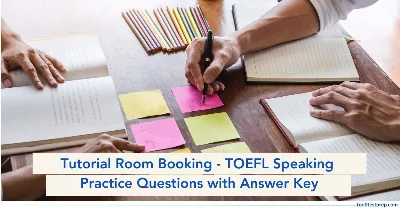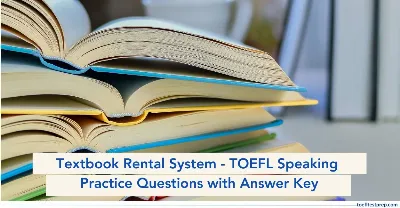Vietnam War - TOEFL Reading Practice Test

"Boost TOEFL reading skills with Vietnam War passages. Analyze historical events, strengthen comprehension, and practice identifying key details and inferences."
Proficiency in reading academic texts is essential for success in the TOEFL Reading section, which reflects the demands of English-speaking academic settings. This section assesses your ability to locate main ideas, extract details, make inferences, and grasp text structure. Regular practice is key to improvement.
Our practice tests simulate the TOEFL’s format, preparing you thoroughly for the test. Try the "Vietnam War" TOEFL Practice Test to become accustomed to the exam format and identify where you can improve.
Reading Instructions:
- You have 15 minutes to read the following passage and answer all 9 questions related to it.
- Most questions are worth 1 point, but the last question is worth more. The directions indicate how many points you will receive for that specific question.
- The specific section/paragraphs have been provided again with the question for ease of understanding and quick solution.
- Some questions include a word or phrase that is highlighted in the question as well as in the paragraph for quick reference.
Vietnam War
The Vietnam War, a long conflict that lasted from 1955 to 1975, is an important event in 20th-century history, deeply affecting both Vietnam and the United States. The war's roots can be traced to the mix of colonial rule, nationalism, and Cold War tensions. After French colonial rule ended in Indochina, Vietnam was divided into two separate states in 1954: the communist North, led by Ho Chi Minh, and the anti-communist South, supported by the United States. This division set the stage for a conflict that would escalate into a full-scale war. It also involved various international players, including China and the Soviet Union, which complicated the political landscape of Southeast Asia.
The United States' involvement in Vietnam was initially driven by the desire to stop the spread of communism, a policy summed up in the "Domino Theory." This theory suggested that if one country in a region fell to communism, neighboring countries would likely follow. As a result, the U.S. began providing military and financial support to the South Vietnamese government, which was struggling against the Viet Cong rebellion. By the early 1960s, American military advisors were sent to help train South Vietnamese forces. However, as the situation worsened, U.S. involvement increased dramatically, resulting in the deployment of combat troops in 1965. This escalation was marked by the Gulf of Tonkin Resolution, which gave President Lyndon B. Johnson broad authority to use military force in Vietnam.
The war was marked by a series of intense military engagements, including the Tet Offensive in 1968, which was a major turning point in how the public viewed the conflict. Even though the Tet Offensive was a tactical failure for the North Vietnamese forces, it had a deep psychological impact on the American public. Graphic media coverage of the war, including images of casualties and destruction, led to widespread anti-war feelings in the United States. Protests erupted across the country, with many citizens questioning the morality and effectiveness of U.S. involvement in Vietnam. This growing disagreement ultimately influenced U.S. policy, leading to a gradual withdrawal of American troops, formalized in the Paris Peace Accords of 1973.
The Vietnam War also had disastrous effects on the Vietnamese people. Estimates suggest that between two and three million Vietnamese lost their lives during the conflict, with countless others suffering from injuries and psychological trauma. The war caused widespread destruction of buildings and roads and environmental damage, with heavy use of chemical agents like Agent Orange leading to long-term health issues. The legacy of these chemical agents continues to affect Vietnam today, as the country deals with the consequences of decades of conflict, including birth defects and chronic health conditions among the population.
In addition to its immediate effects, the Vietnam War had lasting impacts on U.S. foreign policy and military strategy. The conflict led to a review of American military involvement abroad, resulting in the emergence of the "Vietnam Syndrome." This term describes the reluctance of U.S. leaders to engage in military actions for fear of repeating the mistakes of Vietnam. This cautious approach influenced U.S. foreign policy decisions in later years, shaping the nation's involvement in conflicts like those in Iraq and Afghanistan. Also, the war prompted significant changes in domestic policy, including the War Powers Act of 1973, which aimed to limit the president's ability to commit U.S. forces without congressional approval, reflecting growing concerns about executive overreach.
In conclusion, the Vietnam War remains a complex and debated chapter in both Vietnamese and American history. Its legacy is marked by profound loss, social disruption, and a review of national identity and foreign policy. Scholars continue to discuss the war's causes, conduct, and effects, highlighting the need for ongoing dialogue and reflection. Questions remain about the effectiveness of U.S. military strategy and the moral implications of intervention. The Vietnam War serves as a reminder of the intricate relationship between ideology, power, and human experience, and its lessons continue to resonate in modern discussions about war, peace, and the responsibilities of nations in conflict.
Directions: Once you have read the passage, answer the following questions.
Paragraph 1
The Vietnam War, a long conflict that lasted from 1955 to 1975, is an important event in 20th-century history, deeply affecting both Vietnam and the United States. The war's roots can be traced to the mix of colonial rule, nationalism, and Cold War tensions. After French colonial rule ended in Indochina, Vietnam was divided into two separate states in 1954: the communist North, led by Ho Chi Minh, and the anti-communist South, supported by the United States. This division set the stage for a conflict that would escalate into a full-scale war. It also involved various international players, including China and the Soviet Union, which complicated the political landscape of Southeast Asia.
Factual Information Question
- According to paragraph 1, what were the two separate states that Vietnam was divided into in 1954?
- North and South Vietnam
- East and West Vietnam
- North and South Indochina
- East and West Indochina
Negative Factual Information Question
- The author mentions all of the following as factors leading to the Vietnam War EXCEPT:
- Colonial rule
- Nationalism
- Economic prosperity
- Cold War tensions
Paragraph 2
The United States' involvement in Vietnam was initially driven by the desire to stop the spread of communism, a policy summed up in the "Domino Theory." This theory suggested that if one country in a region fell to communism, neighbouring countries would likely follow. As a result, the U.S. began providing military and financial support to the South Vietnamese government, which was struggling against the Viet Cong rebellion. By the early 1960s, American military advisors were sent to help train South Vietnamese forces. However, as the situation worsened, U.S. involvement increased dramatically, resulting in the deployment of combat troops in 1965. This escalation was marked by the Gulf of Tonkin Resolution, which gave President Lyndon B. Johnson broad authority to use military force in Vietnam.
Inference Question
- What can be inferred from paragraph 2 about the U.S. government's perception of communism during the Vietnam War?
- It was seen as a minor threat.
- It was viewed as a global issue requiring immediate action.
- It was considered a local problem that could be ignored.
- It was thought to be a temporary phase in world politics.
Rhetorical Purpose Question
- Why does the author mention the "Domino Theory" in paragraph 2?
- To illustrate the complexity of the Vietnam War
- To explain the rationale behind U.S. involvement in Vietnam
- To highlight the failures of U.S. foreign policy
- To discuss the impact of communism on Vietnam
Paragraph 3
The war was marked by a series of intense military engagements, including the Tet Offensive in 1968, which was a major turning point in how the public viewed the conflict. Even though the Tet Offensive was a tactical failure for the North Vietnamese forces, it had a deep psychological impact on the American public. Graphic media coverage of the war, including images of casualties and destruction, led to widespread anti-war feelings in the United States. Protests erupted across the country, with many citizens questioning the morality and effectiveness of U.S. involvement in Vietnam. This growing disagreement ultimately influenced U.S. policy, leading to a gradual withdrawal of American troops, formalised in the Paris Peace Accords of 1973.
Vocabulary Question
- The word "tactical" in paragraph 3 is closest in meaning to:
- Strategic
- Emotional
- Random
- Unplanned
Sentence Simplification Question
- Which of the sentences below best expresses the essential information in the following text in paragraph 3?
"Graphic media coverage of the war, including images of casualties and destruction, led to widespread anti-war feelings in the United States."
-
- Media coverage of the war caused many Americans to oppose it.
- Many Americans were indifferent to the media coverage of the war.
- The media's portrayal of the war was largely positive.
- Casualties in the war were not reported in the media.
Paragraph 4
The Vietnam War also had disastrous effects on the Vietnamese people. Estimates suggest that between two and three million Vietnamese lost their lives during the conflict, with countless others suffering from injuries and psychological trauma. The war caused widespread destruction of buildings and roads and environmental damage, with heavy use of chemical agents like Agent Orange leading to long-term health issues. The legacy of these chemical agents continues to affect Vietnam today, as the country deals with the consequences of decades of conflict, including birth defects and chronic health conditions among the population.
Purpose of the Passage Question
- What is the main purpose of paragraph 4?
- To discuss the military strategies used during the Vietnam War
- To highlight the human cost of the Vietnam War on the Vietnamese population
- To compare the effects of the Vietnam War on Vietnam and the United States
- To explain the environmental policies in Vietnam post-war
Paragraph 5
In addition to its immediate effects, the Vietnam War had lasting impacts on U.S. foreign policy and military strategy. The conflict led to a review of American military involvement abroad, resulting in the emergence of the "Vietnam Syndrome." This term describes the reluctance of U.S. leaders to engage in military actions for fear of repeating the mistakes of Vietnam. This cautious approach influenced U.S. foreign policy decisions in later years, shaping the nation's involvement in conflicts like those in Iraq and Afghanistan. Also, the war prompted significant changes in domestic policy, including the War Powers Act of 1973, which aimed to limit the president's ability to commit U.S. forces without congressional approval, reflecting growing concerns about executive overreach.
Insert Missing Sentence Question
- In paragraph 5, there is a missing sentence. The paragraph is repeated below and shows four letters (A, B, C, and D) that indicate where the following sentence could be added.
"This reluctance stemmed from the widespread disillusionment with the Vietnam War."
Where would the sentence best fit?
(A) In addition to its immediate effects, the Vietnam War had lasting impacts on U.S. foreign policy and military strategy. The conflict led to a review of American military involvement abroad, resulting in the emergence of the "Vietnam Syndrome." (B) This term describes the reluctance of U.S. leaders to engage in military actions for fear of repeating the mistakes of Vietnam. (C) This cautious approach influenced U.S. foreign policy decisions in later years, shaping the nation's involvement in conflicts like those in Iraq and Afghanistan. Also, the war prompted significant changes in domestic policy, including the War Powers Act of 1973, which aimed to limit the president's ability to commit U.S. forces without congressional approval, reflecting growing concerns about executive overreach. (D)
-
- Option A
- Option B
- Option C
- Option D
Paragraph 6
In conclusion, the Vietnam War remains a complex and debated chapter in both Vietnamese and American history. Its legacy is marked by profound loss, social disruption, and a review of national identity and foreign policy. Scholars continue to discuss the war's causes, conduct, and effects, highlighting the need for ongoing dialogue and reflection. Questions remain about the effectiveness of U.S. military strategy and the moral implications of intervention. The Vietnam War serves as a reminder of the intricate relationship between ideology, power, and human experience, and its lessons continue to resonate in modern discussions about war, peace, and the responsibilities of nations in conflict.
Prose Summary Question
- Directions: An introductory sentence for a brief summary of the passage is provided below. Complete the summary by selecting the THREE answer choices that express the most important ideas in the passage. Some sentences do not belong in the summary because they express ideas that are not presented in the passage or are minor ideas in the passage. This question is worth 2 points.
"The Vietnam War was a significant conflict that had profound effects on both Vietnam and the United States."
-
- The war resulted in millions of Vietnamese casualties and long-term health issues.
- The U.S. involvement was driven by the desire to stop the spread of communism.
- The conflict led to a review of U.S. military strategy and foreign policy.
- The Vietnam War was a straightforward conflict with clear objectives.
Before moving forward to check your answers, don't forget to go through the updated TOEFL Exam Pattern and Syllabus.
Answer Key with Explanation for TOEFL Reading Passage - Vietnam War
1. Answer: A
Explanation: The passage explicitly states that after French colonial rule ended in Indochina, Vietnam was divided into two separate states in 1954: the communist North and the anti-communist South. This division is a key point in understanding the origins of the Vietnam War.
2. Answer: C
Explanation: The passage lists colonial rule, nationalism, and Cold War tensions as factors leading to the Vietnam War. Economic prosperity is not mentioned as a contributing factor, making it the correct answer to this question.
3. Answer: B
Explanation: The passage discusses the "Domino Theory," which indicates that the U.S. government perceived communism as a significant threat that could spread rapidly if not contained. This suggests a sense of urgency and a global perspective on the issue.
4. Answer: B
Explanation: The mention of the "Domino Theory" serves to clarify why the U.S. felt compelled to intervene in Vietnam. It illustrates the belief that the fall of one country to communism could lead to a chain reaction affecting neighboring countries.
5. Answer: A
Explanation: The term "tactical" refers to actions or plans designed to achieve a specific end, often in a military context. "Strategic" is the closest synonym, as both terms relate to planning and execution in achieving objectives.
6. Answer: A
Explanation: This option succinctly captures the essence of the original sentence, which indicates that graphic media coverage led to widespread anti-war sentiments among the American public.
7. Answer: B
Explanation: Paragraph 4 focuses on the devastating effects of the Vietnam War on the Vietnamese people, including loss of life, injuries, and long-term health issues, making this the main purpose of the paragraph.
8. Answer: B
Explanation: The missing sentence fits best after the second sentence, as it elaborates on the reluctance of U.S. leaders to engage in military actions, which stems from the disillusionment with the Vietnam War discussed in the preceding sentences.
9. Answer: Option A, B and C.
Explanation: Option A highlights the human cost of the war, which is a significant point in the passage. Option B addresses the motivation behind U.S. involvement, which is crucial for understanding the conflict. Option C reflects the long-term impacts on U.S. foreign policy, another key theme of the passage. Option D is incorrect as it misrepresents the complexity of the conflict.
How did you handle the 'Vietnam War' reading test? Whether you find it challenging or not, we're here to support you. Keep practicing with our extensive collection of sample tests and build your confidence along the way!
Also Read:
Featured Articles

Marriage Across Cultures - TOEFL Reading Practice Test
Improve TOEFL Reading with passages on 'Marriage Across Cultures,' delving into unique traditions, values, and global perspectives on marriage.
July 15, 2025
Writing Center Services - TOEFL Speaking Practice Test with Answers (Integrated)
Prepare for the TOEFL Integrated Speaking section with a practice test on 'Writing Center Services' and learn to improve score in TOEFL exam.
July 15, 2025
Tutorial Room Booking - TOEFL Speaking Practice Test with Answers (Integrated)
Prepare for the TOEFL Integrated Speaking section with a practice test on 'Tutorial Room Booking ' and learn to improve score in TOEFL exam.
July 15, 2025
Textbook Rental System - TOEFL Speaking Practice Test with Answers (Integrated)
Prepare for the TOEFL Integrated Speaking section with a practice test on 'Textbook Rental System' and learn to improve score in TOEFL exam.
July 15, 2025